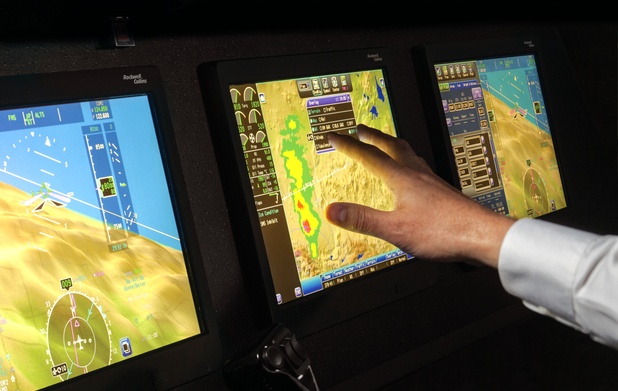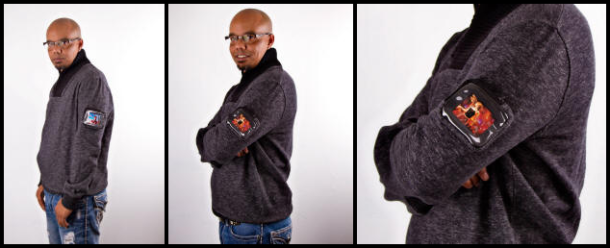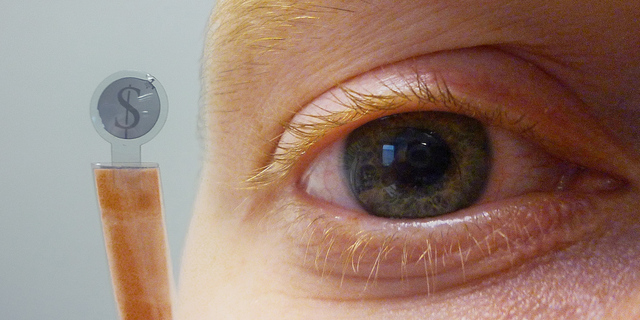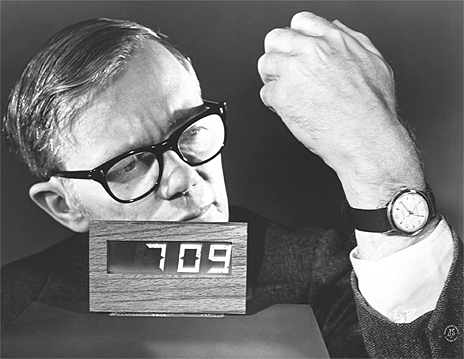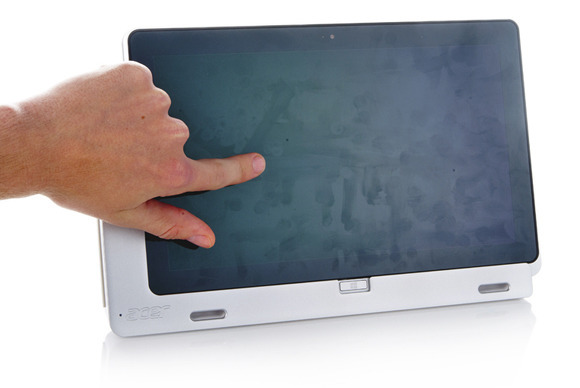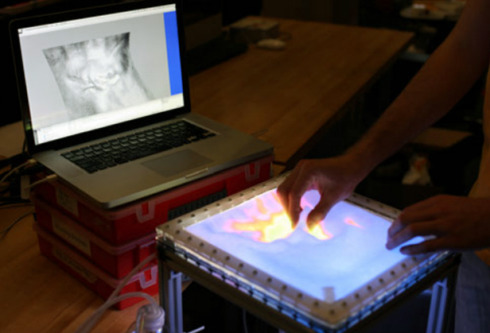Display Technology News Roundup 9.21.2015
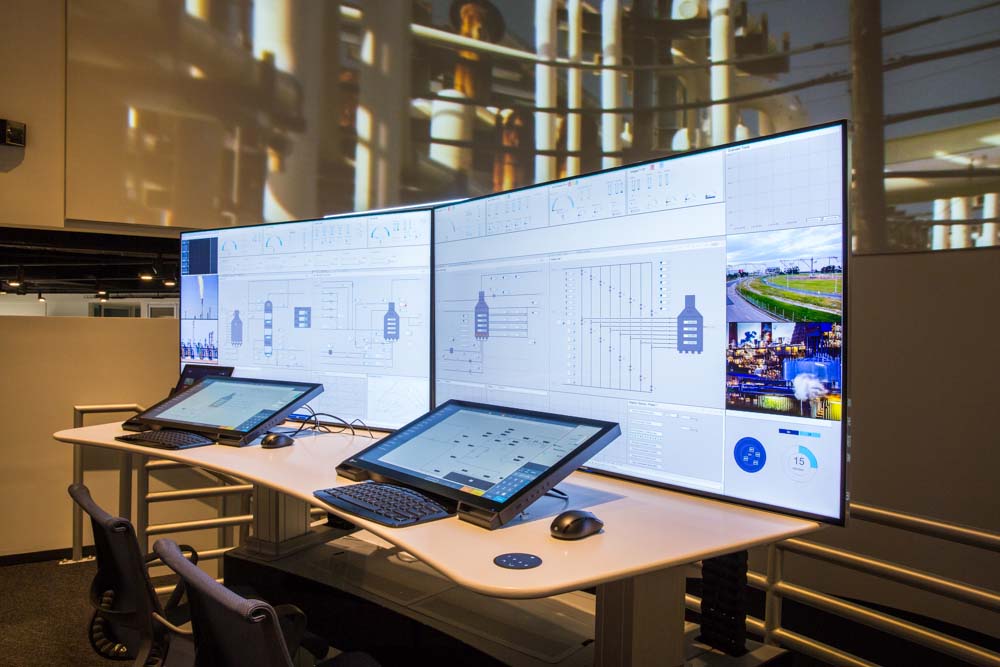
Image via Honeywell
How Display Technology Transforms Control Rooms "Regardless of the size of the display, ease of use is a key design factor. Operators are being asked to control far more pieces of equipment, and many of them are complex machines that run at far higher speeds than their predecessors. That means operators must be able to understand and analyze a lot of information. "The amount of data available today is an order of magnitude different than several years ago," Scott says. "We’ve moved to graphics, but a human’s visual awareness to see everything and the amount of information people can process hasn’t changed. Going forward, HMIs need to provide better information and keep the operator in the loop so they truly know what’s going on. When something goes off the rails, they need to know what steps to take." Many HMIs are being designed to help operators focus in on problems. And when problems occur, they’re providing information that helps operators know what to do to rectify the situation." via Automation World
Apple 3D Touch – the iPhone 6s reboots multitouch "Apple revealed the iPhone 6s and iPhone 6s Plus, and along with them a new sort of multitouch: 3D Touch. This system has Jony Ive saying that "tapping, swiping, and pinching have forever changed the way we interact with our digital world" - now it's time for Peek and Pop. This is what you might recognize as a technology called Force Touch, but here Apple is suggesting it's different enough from previous iterations that it'll be called something different: 3D Touch. According to Ive, "you can dip in and out of where you are, without losing sense of your context." This system has a light press for one action and a deep press for another. To see and sense these touches, the iPhone 6s and iPhone 6s Plus works with capacitive sensors integrated into the backlight of the phone's display." via SlashGear
The Smart UI Design Behind Apple’s Frictionless 3D Touch "You could think of 3D touch as a right-click for a touchscreen. It’s a gesture that unearths a vast amount of extra information and functionality with very little effort. To make sense of this new form of interaction, Apple has given different types of presses playful nicknames—peek and pop—that fit neatly into the vocabulary we already understand with swipe, tap and pinch. Peek and pop have essentially turned the iPhone operating system into nesting dolls of information. Press on the screen a little harder than usual and you’ll experience peek—a preview of information like emails, directions, or photos. Press harder yet and you’ll “pop” into that information deeper, navigating directly to the app itself. “It isn’t really a new gesture, just an extension of one you already know very well,” explains Tobias van Schnieder, lead designer at Spotify. ...True 3D touch doesn’t feel essential in the way that the first generation of multi-touch interactions do today. It might not for a while." via Wired
Profit Margins for Large-Area Thin Film Transistor Liquid Crystal Displays to Drop ""Even with recent price declines, many large panel sizes currently sell at marginal profits," Annis said "At least for now, panel makers have decided to keep utilization high and minimize overhead costs, in order to chase as much profit as possible while they are still able to. The downside to this strategy is that panel inventories at set-makers have ballooned, widening the gap between TV panel shipments and TV set shipments." As this excess inventory is sold down, panel prices are also expected to decline rapidly. Large-area display profitability will likely follow the same trajectory. At the same time, a substantial number of new eighth-generation (Gen 8) factories are currently ramping up production. Dedicated capacity for large-area displays will grow at a rate of 6 percent in 2015 and 8 percent in 2016, the highest rates in several years." via I-Connect007
Displays for a New Generation of Electronics "Whether the display serves a large-screen TV, a smartphone, or a wearable device, power consumption plays a key role in the design process. The issue of energy efficiency poses a problem for OLEDs that rely on fluorescent emission. This technology converts only 25% of the excitonic energy used to create light, with the remaining 75% lost as heat. In the late 1990s, Princeton University and the University of Southern California found that the use of soluble phosphorescent small-molecule materials improved the energy-to-light conversion efficiency to nearly 100%. UDC has since refined and advanced phosphorescent OLED (PHOLED) technology. In addition to achieving greater energy efficiency, PHOLED technology reduces the display’s operating temperature considerably. Because higher temperatures accelerate degradation of the organic materials, the heat reduction extends the life of the PHOLED and reduces the amount of air conditioning required to keep the display cool." via IHS Electronics 360
Display database for engineers Search thousands of display panels by multiple characteristics and compare results side-by-side using the display database multisearch.
Quantum dots move into monitors "According to the Massachusetts Institute of Technology (MIT) spin-out QD Vision, upon whose “ColorIQ” technology the displays are based, that represented the world’s first quantum dot monitor. ...When illuminated by the blue LEDs that typically feature in LCD backlights, the quantum dots act like a phosphor, generating light across the rest of the visible spectrum. The specific wavelength of that re-emitted light depends on the precise size of the quantum dot nanocrystals, and can be carefully controlled. According to the company, it means that its Color IQ optics emit “pure, finely-tuned colors”, enabling better color saturation and color rendering compared with standard LCD screens. “Most LCD TVs available today offer size and definition at the expense of color, using a smaller color gamut that only achieves 60-70 percent of the NTSC standard,” claims the firm. “With Color IQ optics, LCD TVs and other displays can achieve 100 percent of the standard.”" via Optics.org
Military display technology lets commander 'see through' armour "Developed by defence firm BAE Systems, the BattleView 360 is a digital mapping system that uses cameras and sensors to track the positions of all surrounding features of interest in both two and three-dimensional modes. A specially designed headset can be synced to vehicle cameras to allow commanders to 'see through' their vehicles in both visual and infra-red in real-time, or alternatively the feed can be transmitted to a touch-screen display. The live-feed will be overlaid with information from other vehicle systems and the touch-screen display can be used to identify friendly and enemy forces, for route planning and to let the commander view the display of other crew members, such as the gunner." via E&T Magazine
Will the next big Samsung phone have a display screen that folds in half? "With Samsung's phone sales looking troubled these days, the company has been forced to differentiate its devices with features like dual-curved displays and the S Pen stylus. A phone with a foldable display could be exactly what Samsung needs to win back customers who have defected to cheaper Chinese devices or Apple's iPhones. A foldable display isn't without precedent. In 2008, Samsung showed off a prototype of a display that folds in half at The Society for Information Display (SID), an event that showcases innovative display technologies. You can see the prototype display in action in the video above. (Video)" via Mashable
Will in-cell touch displays for smartphones rise rapidly? "The share of in-cell and on-cell touch display solutions within the smartphone industry is rising fast, according to WitsView. With Japan panel makers as the leading adopter, the combined share of in-cell and on-cell solutions in the smartphone market is expected to hit 40.6% in 2015 and will likely reach 47.8% in 2016, as these technologies will subsequently gain support from other panel makers from South Korea, Taiwan and China. "In-cell technology began to attract the market's attention when Apple introduced it to the iPhone 5 series," said Boyce Fan, senior research manager for WitsView. "The technology gained additional momentum as Japan panel maker Japan Display (JDI) seized the opportunity to apply its hybrid in-cell solution to all of its high-end smartphone panels. Since then, JDI has aggressively promote this technology in China, raising both the reputation of in-cell displays in the high-end smartphone market and the panel maker's brand recognition."" via DigiTimes
Do you have content to share with Display Alliance? Anyone can post press releases, white papers, commentary, videos, and more in the open section.
What Is HDR (High Dynamic Range) Display Technology? "HDR-capable displays can read that information and show an image built from a wider gamut of color and brightness. Besides the wider range, HDR video simply contains more data to describe more steps in between the extremes. This means that very bright objects and very dark objects on the same screen can be shown very bright and very dark if the display supports it, with all of the necessary steps in between described in the signal and not synthesized by the image processor. To put it more simply, HDR content on HDR-compatible HDTVs can get brighter and darker at the same time, and show more shades of gray in between. Similarly, they can produce deeper and more vivid reds, greens, and blues, and show more shades in between. Deep shadows aren't simply black voids; more details can be seen in the darkness, while the picture stays very dark. Bright shots aren't simply sunny, vivid pictures; fine details in the brightest surfaces remain clear. Vivid objects aren't simply saturated; more shades of colors can be seen." via PC Magazine
Exploring Virtual Reality Display Technology in the Military Industry "The reason why I am reporting this here is the appearance of VR & AR components directly into the military mix, and also the latest technology seen here that is also about to once again cross the divide and make itself felt in the consumer sector. Regarding home grown technology from the defence industry (that we are able to talk about publicly), the big buzz at the show was the Striker II. Developed by BAE Systems, and called by the company most advanced fighter pilot helmet, to evaluate its digital night vision capability and target awareness. This space age Head-Mounted Display (HMD) (the defence sector coining the phrase originally) utilizes cutting-edge tracking system that ensures the pilot’s exact head position and the aircraft computer system are continuously in syn. While the digital night vision is projected into the pilot’s view, along with representations of target and aircraft instrumental data." via Road to VR
How Display Technology Is Going Organic "A third challenge involves cost. OLED displays are made using a fine metal mask to create the pixel pattern. In this approach, a thin sheet of metal with holes in it is placed over the substrate, and the organic molecules travel through the holes before ending up on the substrate. That is cost-effective for small displays, which helps explain why OLEDs have done so well in mobile applications. When the same technology is scaled up for a large display or television, however, drawbacks appear. It becomes difficult to make the masks and to maintain the proper tolerance. Also, during processing, the masks have to be cleaned periodically. What’s more, the mask must be precisely positioned from one pass to another so that the different colors found in each pixel properly align to each other. Partly as a result of such factors, today a large OLED TV can be many times the cost of a similarly sized LCD TV." via Photonics Spectra
How Is Clothing Being Turned into Information Displays? "Researchers from Holst Centre (set up by TNO and imec), imec and CMST, imec’s associated lab at Ghent University, have demonstrated the world’s first stretchable and conformable thin-film transistor (TFT) driven LED display laminated into textiles. This paves the way to wearable displays in clothing providing users with feedback. ...The conformable display is very thin and mechanically stretchable. A fine-grain version of the proven meander interconnect technology was developed by the CMST lab at Ghent University and Holst Centre to link standard (rigid) LEDs into a flexible and stretchable display. The LED displays are fabricated on a polyimide substrate and encapsulated in rubber, allowing the displays to be laminated in to textiles that can be washed." via Solid State Technology
Are you an engineer or have display expertise? Email jason@displayalliance.com to be featured in the interviews section.
NASA’s Avionic Cockpit Display Helps Mitigate Supersonic Booms "While low-boom supersonic aircraft will minimize the intensity and occurrence of sonic booms, atmospheric physics still dictate that shock waves will reach the ground in some form, no matter how well the vehicle is designed. The question is whether the location and strength of these waves can be predicted and, if so, can the information be relayed to the crew in time for them to do something about it?" via Aviation Week
Car makers going big on 3D touch control, says UK sensor firm "The company said it is seeing its QTC force touch sensors being integrated under in-car surfaces such as plastics, rubbers, wood, leather, metals and glass. Neil Jarvie, Peratech sales v-p, says that the capability to incorporate pressure sensing that capacitive touch sensing does not provide is important for Tier 1 automotive companies. The matrix sensors are designed to track multiple touches for position on X and Y axes and independent pressure sensing along the Z-axis. According to Jarvie, this allows designers to reduce button count in the centre stack, steering wheel and other cockpit surfaces." via ElectronicsWeekly
What is the challenge of parasitic extraction for touchscreen designs? "One of the major verification challenges for touchscreens is parasitic extraction. Because a finger or touch tool is essentially a big conductor sitting on top of the screen, a 3D field solver extraction tool is typically required to achieve the desired accuracy necessary to capture the subtle effect at the touch point. However, most field solvers do not have the capacity to evaluate an entire design in a timely manner, making them unacceptable for production design. Capacity in this instance means the ability of the extraction tool to run on big designs to completion. For example, if an extraction tool runs on a design for three days and generates accurate results, it does not suffer from a capacity issue, but it may suffer from a performance issue. If another extraction tool runs on that same design, but never finishes, it has a capacity issue, which means the algorithm inside the tool is not well-suited for large designs. Capacity is simply a metric, like accuracy and performance. With field solvers, capacity is typically an issue because of the resources required to do the extensive computational work. What is needed is an extraction tool that can deliver field solver accuracy with a satisfactory turnaround time for production designs." via EDN
Here's why Apple made the touchscreen stylus that Steve Jobs hated "When Apple marketing chief Phil Schiller announced that the company's stylus for new iPad Pro would be called Pencil, the crowd audibly laughed in unison. On the surface, it was because it played into the stereotype that Apple lays claim to everyday inspirations. But on a deeper level it traces back to former CEO Steve Jobs, who famously said in 2007 at the initial iPhone reveal, "Who wants a stylus? You have to get em', put em' away. You lose them. Yuck." Yet it turns out that eight years later, some people do want a stylus — and they've improved substantially alongside the devices with which they're used. ...Steve Jobs didn't envision the iPhone 1 being a viable tool for graphic designers and illustrators, people who've long used pro-grade products from companies like Wacom. But now, the Pencil is an option for those who want to use the iPad Pro as if it were a sheet a paper and the stylus as if it were — wait for it — a real pencil. Apple has designed the pen so that it has little to no latency. It can draw thicker lines with applied pressure and orient its toolset to whether you're tilting the pen, for shading, or dragging it along the surface to draw lines or form letters. These selling points make it clear that the Pencil is not designed to help you clean out your inbox." via The Verge
This Head-Up Display Helmet Will Make F-35 Pilots Missile-Slinging Cyborgs "After years of delays and more than $60 billion dropped on development, the jet is finally just about ready, and it’s bringing some pretty slick tech along with it—including a brand new helmet that will let the pilot see through the plane, aim missiles with his eyeballs, and keep an eye on key data no matter where he turns his head. The F-35 Gen III Helmet Mounted Display System, developed by a joint venture led by defense contractor Rockwell Collins, takes the head-up display (HUD) usually projected onto on a piece of glass at the front of the cockpit, and puts it on the helmet. That means the pilot’s always got it in his field of vision, and can see useful data like the horizon, airspeed, altitude, and weapons status wherever he’s looking. More than keeping the pilot’s cranium safe from smacking against the canopy, and mounting stuff like a sun visor and oxygen mask, the Gen III helmet is designed to improve the pilot’s situational awareness. At engagement altitudes of a few thousand feet and speeds of up to Mach 1.6, it’s crucial to know what’s going on ahead of, to the side of, above, and below and the jet." via Wired
Virtual Reality's Pursuit Of Presence and True Immersion "Depending on where an object lies in our visual periphery, our sight of it may be less sensitive to fine detail (or high-resolution), but more aware of latency and rapid changes. Research into VR must account for both this requirement of highly precise rendering in particular regions of the visual spectrum and the low-latency necessities of generating the entire view-scape. What does this all mean? Well, an immersive display capable of outputting a human eye’s expected resolution of 60 ppd requires an incredible 7.2K of horizontal and 8.1K of vertical pixels per eye — or 116.4 million pixels (megapixels) total or 16k resolution! Current displays, such as the latest home entertainment systems and VR technology, are capable of up to “only” 4K resolutions. As VR display research advances, though, 16K per-eye resolutions will likely be achievable within a few years. But what about latency? After all, low latency is absolutely essential for true immersion, and arguably is the most important performance metric for VR." via TechCrunch
New system for deposition of OLED barrier films "AIXTRON SE a worldwide leading provider of deposition equipment to the semiconductor industry, has sold the first Optacap-200 encapsulation tool to a major Asian display manufacturer. The standalone R&D system that handles substrate sizes of 200 mm x 200 mm was ordered in the third quarter 2015 and is scheduled for delivery in the first quarter 2016. The innovative Optacap plasma enhanced chemical vapor deposition (PECVD) technology enables the deposition of highly flexible and effective barrier films for thin-film encapsulation of OLED display, OLED lighting, organic photovoltaic and flexible electronic devices." via Printed Electronics World
Introducing an Automultiscopic Display "A team of researchers at the USC Institute for Creative Technologies (Playa Vista, CA) have developed a system that captures videos in a unique way and then presents full sized images of people on a so-called 'automultiscopic' display. The term automultiscopic is used to define a display that allows multiple users to view 3D content simultaneously, without the need for glasses. A recent publication by the team is entitled 'Creating a life-sized automultiscopic Morgan Spurlock for CNNs "Inside Man."' A copy of this brief article is available on-line and can be found here. The production of an automultiscopic image begins with capturing video of the subject. Done while the subject is uniformly bathed with intensely bright light, the capture is accomplished using 30 Panasonic X900MK 60p consumer cameras spaced over 180°." via DisplayDaily
Projected Capacitive Touch Screen Technology and Borders "The size of a PCAP sensor is directly related to the size of the display active area and the borders needed to have a linearly sensitive, reliable sensor that can be manufactured efficiently. Many different options are available for hosting the conductive traces that make up the bulk of that border, all with their own pros, cons and costs. Ideally, the sensor and the display would have the same active and outer areas, but as display borders get narrower, the touch sensor industry is striving to keep pace. By far the most common type of projected capacitive touch screen traces is the printed metal trace, usually Ag (silver). There are three main methods for creating these traces: printing, laser ablation and sputter deposition. These are listed in increasing trace density and price. The printing option is the cheapest and fastest method, but the traces are limited by the screen or ink deposition resolution." via TouchInternational
What did you think about today's news? Leave a comment here and share your thoughts.
 Display Alliance
Display Alliance



